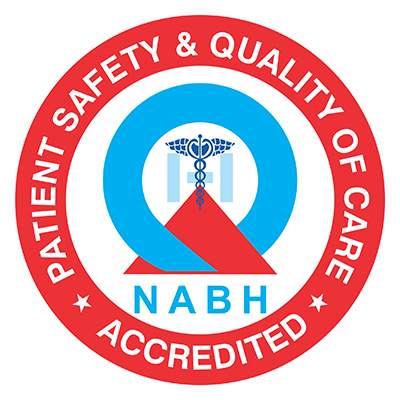
One summer evening, 35-year-old Rekha was diagnosed with acute appendicitis and suggested immediate surgery. She immediately recalled a cousin who had undergone an open appendectomy ten years ago and had to spend over a week in the hospital with a month-long recovery period. Apprehensive, she spoke to her doctor about it. Who hastened to assure her that medical science had advanced by leaps and bounds since then, and what took 10 days then would take a day now!
Rekha underwent laparoscopic appendectomy, and was discharged within 24 hours. She resumed desk work within 4 days. Her scars? Barely noticeable.
Both surgeries were medically successful. But the difference in recovery and comfort was significant.
Medical advancements have redefined how surgeries are performed today. One of the most significant shifts in modern surgical practice is the move from traditional open surgeries to minimally invasive techniques like laparoscopy. While both have their place in clinical care, understanding the difference helps patients make informed decisions when faced with surgical options.
Open Surgery
Open surgery is the conventional form of surgery that involves making a large incision in the body to access the affected organ or area. While effective, and still necessary in complex cases, open surgeries often come with longer recovery times, more visible scarring, and a higher risk of infection due to the larger wound surface and prolonged stay at the hospital.
Laparoscopy
Laparoscopy, also known as keyhole surgery, is a minimally invasive procedure that uses small incisions and a tiny camera (laparoscope) to perform surgeries with precision. Surgeons operate through these small cuts using specialized instruments while viewing the internal organs on a monitor.
It’s commonly used for procedures involving the gallbladder, appendix, uterus, fallopian tubes, and even the intestines.
Recovery & risks: The numbers speak
Globally, a 2023 study published in the Journal of Minimally Invasive Surgery found that:
- Patients who underwent laparoscopic surgery had a 60% shorter hospital stay on average
- Infection rates were reduced by 40% compared to open surgery
- Postoperative pain was significantly lower, leading to reduced dependency on painkillers
In India, a report from the Indian Journal of Surgery (2022) noted that over 70% of elective gallbladder and gynaecological surgeries in urban hospitals are now performed laparoscopically, up from just 20% a decade ago. The change is driven not just by doctor preference, but patient awareness and demand.
When is Open Surgery the best option?
Despite its benefits, laparoscopy isn’t always suitable. In cases where there is:
- Extensive internal bleeding
- Large or complex tumours
- Previous multiple abdominal surgeries causing adhesions
…an open approach may be safer. The decision ultimately rests on the surgeon’s assessment, diagnostic clarity, and the patient’s overall condition.
Cost considerations
The general assumption is that laparoscopy is more expensive. While initial surgical costs can be marginally higher due to advanced equipment, the overall cost often balances out. Shorter hospital stays, quicker return to work, and lower medication needs often make it cost-effective in the bigger picture.
The role of surgical expertise and infrastructure
The success of any surgery, whether laparoscopic or open, depends not just on the method but on the surgeon’s skill and the hospital’s infrastructure.
In India, especially in metros and Tier 2 cities, there has been a conscious move towards upgrading surgical practices. However, not all hospitals are equipped equally. The presence of advanced technology, infection control protocols, experienced surgical teams, and postoperative care are critical in determining outcomes.
It does matter where you get treated
When patients arrive at a crossroads between open and laparoscopic surgery, the guidance they receive is pivotal. Hospitals that offer a multidisciplinary approach i.e. where diagnosis, surgical planning, and recovery are treated as one cohesive journey are seen to create better outcomes.
At BBR Hospitals, for instance, laparoscopic surgeries are planned with precision. The focus is on patient comfort, safety, and speed of recovery. With experienced surgeons trained in minimally invasive procedures, well-equipped operation theatres, and a patient-first approach, the hospital has become a preferred choice for those seeking high-quality surgical care in Hyderabad. And for patients like Rekha, it’s not just about a smaller scar…it’s about bouncing back to life faster, stronger, and safer.
Both laparoscopy and open surgery have their place in the world of medicine. The real advantage lies in personalized care – choosing the right procedure for the right condition, and more importantly, the right hospital to trust. In that context, hospitals like BBR are quietly shifting the narrative from simply treating ailments to redefining what surgical recovery looks like in India today.


